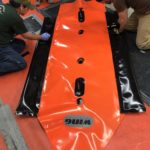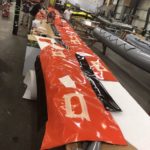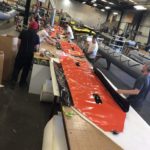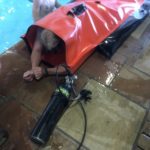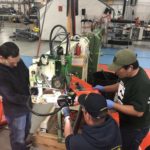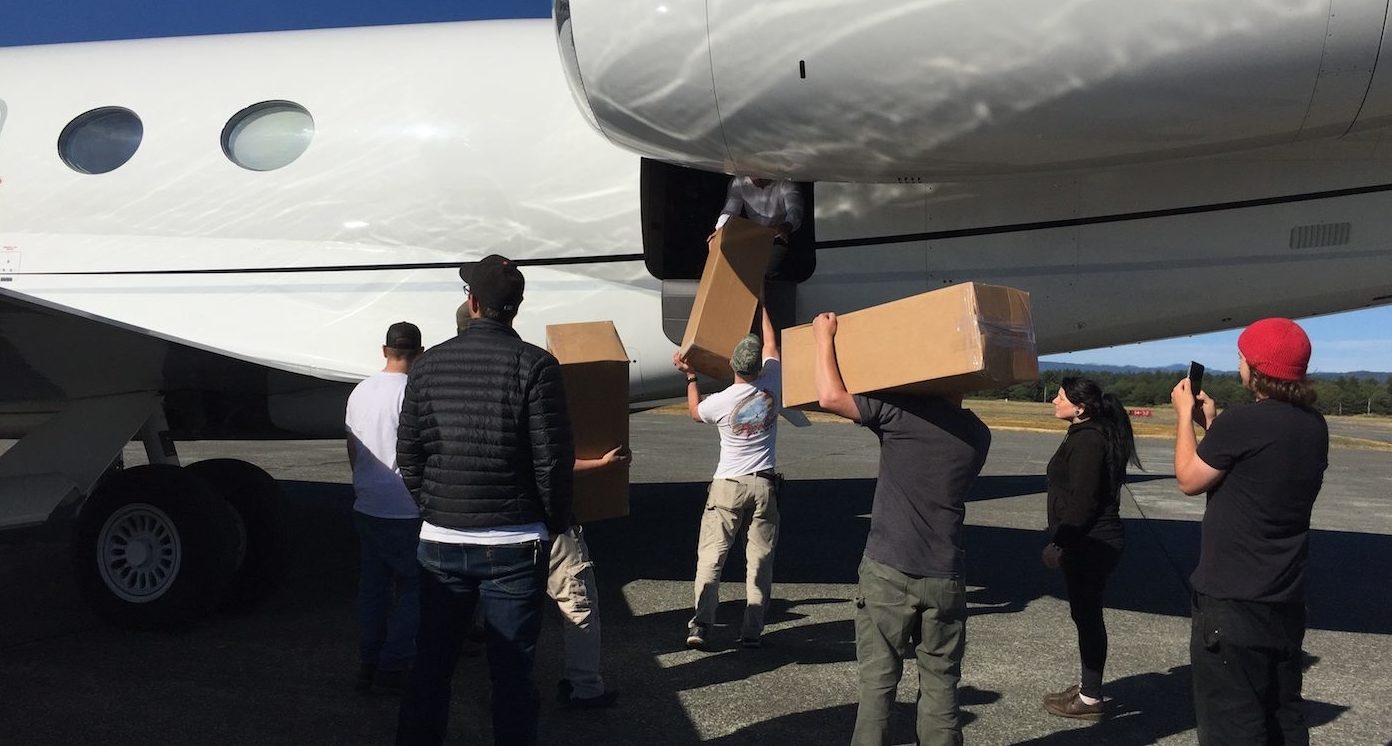
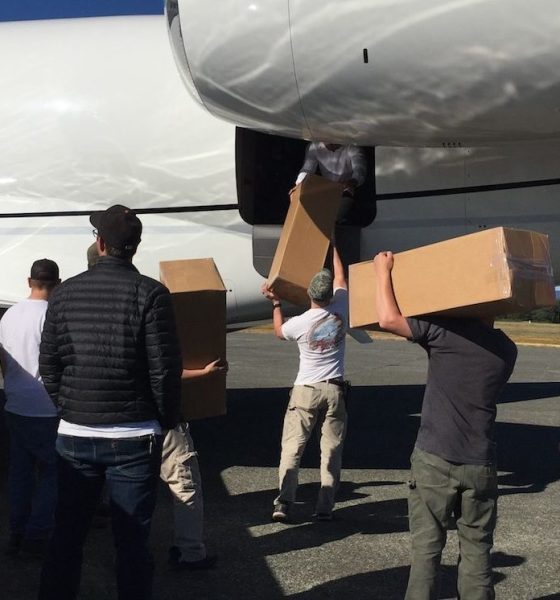
News
Answering Elon Musk’s call for help to build Thailand’s cave rescue pod in 24 hours
On the morning of Friday, July 6, Andrew Branagh received a call that would put his company’s 30-year experience in the field to the test. Branagh, who serves as the CEO of Arcata-based Wing Inflatables, had been asked by Elon Musk’s engineering team from SpaceX to construct an inflatable escape pod for the 12 children and their coach who are currently stranded in an air pocket inside the sprawling Tham Luang Nang Non cave complex in Thailand. Knowing that time is of the essence, Branagh and his team got to work.
The stranded members of the Wild Boar Soccer Team have been stranded in the caves since June 23, after a casual excursion into the underground caverns turned into a pitch-black ordeal due to flash floods. The group of 13, comprised of boys aged 11-16 and their 25-year-old coach, were missing until this past Monday, when they were located by two UK divers. The children and their coach have been given food and survival supplies, and on Tuesday, a doctor and a nurse spent the night with them. While the group is safe for now, however, retrieving them is not easy, considering that they are located 2.5 miles away from the entrance to the caves. Parts of the cave systems are also underwater, which would force the children to dive into murky waters during their retrieval.
- Wing Inflatables’ rescue pods under construction. [Credit: Giovanna Castro Salas/Wing Inflatables via Mad River Union]
- Wing Inflatables’ rescue pods under construction. [Credit: Giovanna Castro Salas/Wing Inflatables via Mad River Union]
- Wing Inflatables’ rescue pods under construction. [Credit: Giovanna Castro Salas/Wing Inflatables via Mad River Union]
- Wing Inflatables’ rescue pods under construction. [Credit: Giovanna Castro Salas/Wing Inflatables via Mad River Union]
- Wing Inflatables’ rescue pods under construction. [Credit: Giovanna Castro Salas/Wing Inflatables via Mad River Union]
Wing Inflatables’ rescue pods under construction. [Credit: Giovanna Castro Salas/Wing Inflatables via Mad River Union]
In a tweet on Friday, Elon Musk posted a brief update on Twitter stating that SpaceX and Boring Co. engineers are headed to Thailand in order to see if they can be helpful to the government’s rescue efforts. That was the same day that Branagh woke up to a text and call from the SpaceX team. Branagh notes that the message was brief, but the request was clear.
“Elon has an idea, or our team does.”
Musk’s initial idea to rescue the trapped children is to use an inflatable tube. Considering Wing’s experience in the field, Branagh and his team went to work refining the idea. The result was a submersible “torpedo,” which could hold a person with an air tank and a breathing apparatus. The torpedo is designed to be towed by its front and back, and be sleek enough to be guided through the cave system’s trickiest sections. Branagh opted to utilize 30% of his company’s workforce for the fast-track effort, reducing his business’ usual output by half. The CEO’s gambit worked, and by 9:30 a.m. on Friday, a prototype was ready. Branagh noted that the first rescue pod, which is 7-feet-long, sealed with velcro, and inflatable with the passenger’s exhaled air, was a finished product. There were no throw-away units or re-dos. There was just not enough time.
By 1:00 p.m., Wing’s rescue pod was tested on the Arcata Community Pool, with a certified dive instructor and two individuals who do not know how to swim. The tests were encouraging, with both test individuals being able to breathe comfortably inside the rescue pod. Branagh had also been speaking with Musk and his engineering staff in a conference call.
“He (Elon) was very direct and clear on supporting getting a solution in place,” Branagh said.
By 5:15 p.m., the first set of Wing Inflatables rescue pods were ready to be transported from Arcata-Eureka airport in Northern CA.
Apart from the inflatable pods that the engineers from SpaceX and The Boring Company transported to Thailand on Friday, Musk and his team at LA are also designing a mini-submarine for the children. In a series of tweets over the weekend, Musk stated that the mini-sub would be small enough to fit through the contours of the cave and its hull will be made of the same material as the oxygen transfer tube of a Falcon rocket, making it extremely durable. The mini-sub would have four handles and hitch points for the front and rear, with two air tanks on both front and rear, allowing up to four tanks to be connected.
Given Chiang Rai airport hours, soonest we could’ve departed US was an hour ago, but cave now closed for diver rescue. Will continue testing in LA in case needed later or for somewhere else in future.
— Elon Musk (@elonmusk) July 8, 2018
Rescue efforts for the stranded children are already underway as of Sunday. For this rescue attempt, the children would have to dive using scuba gear into the waters with two experienced divers. Divers who will be conducting the retrieval of the soccer team are expected to spend 11 hours inside the caves, six hours heading to the children, and five hours going out. It remains unknown for now if the rescuers will be utilizing the rescue pods delivered by the SpaceX and Boring Co. team. Musk’s mini-sub continues testing in LA, just in case it’s needed for the cave rescue efforts.

Elon Musk
Elon Musk’s X will start using a Tesla-like software update strategy
The initiative seems designed to accelerate updates to the social media platform, while maintaining maximum transparency.

Elon Musk’s social media platform X will adopt a Tesla-esque approach to software updates for its algorithm.
The initiative seems designed to accelerate updates to the social media platform, while maintaining maximum transparency.
X’s updates to its updates
As per Musk in a post on X, the social media company will be making a new algorithm to determine what organic and advertising posts are recommended to users. These updates would then be repeated every four weeks.
“We will make the new 𝕏 algorithm, including all code used to determine what organic and advertising posts are recommended to users, open source in 7 days. This will be repeated every 4 weeks, with comprehensive developer notes, to help you understand what changed,” Musk wrote in his post.
The initiative somewhat mirrors Tesla’s over-the-air update model, where vehicle software is regularly refined and pushed to users with detailed release notes. This should allow users to better understand the details of X’s every update and foster a healthy feedback loop for the social media platform.
xAI and X
X, formerly Twitter, has been acquired by Elon Musk’s artificial intelligence startup, xAI last year. Since then, xAI has seen a rapid rise in valuation. Following the company’s the company’s upsized $20 billion Series E funding round, estimates now suggest that xAI is worth tens about $230 to $235 billion. That’s several times larger than Tesla when Elon Musk received his controversial 2018 CEO Performance Award.
As per xAI, the Series E funding round attracted a diverse group of investors, including Valor Equity Partners, Stepstone Group, Fidelity Management & Research Company, Qatar Investment Authority, MGX, and Baron Capital Group, among others. Strategic partners NVIDIA and Cisco Investments also continued support for building the world’s largest GPU clusters.
News
Tesla FSD Supervised wins MotorTrend’s Best Driver Assistance Award
The decision marks a notable reversal for the publication from prior years, with judges citing major real-world improvements that pushed Tesla’s latest FSD software ahead of every competing ADAS system.

Tesla’s Full Self-Driving (Supervised) system has been named the best driver-assistance technology on the market, earning top honors at the 2026 MotorTrend Best Tech Awards.
The decision marks a notable reversal for the publication from prior years, with judges citing major real-world improvements that pushed Tesla’s latest FSD software ahead of every competing ADAS system. And it wasn’t even close.
MotorTrend reverses course
MotorTrend awarded Tesla FSD (Supervised) its 2026 Best Tech Driver Assistance title after extensive testing of the latest v14 software. The publication acknowledged that it had previously criticized earlier versions of FSD for erratic behavior and near-miss incidents, ultimately favoring rivals such as GM’s Super Cruise in earlier evaluations.
According to MotorTrend, the newest iteration of FSD resolved many of those shortcomings. Testers said v14 showed far smoother behavior in complex urban scenarios, including unprotected left turns, traffic circles, emergency vehicles, and dense city streets. While the system still requires constant driver supervision, judges concluded that no other advanced driver-assistance system currently matches its breadth of capability.
Unlike rival systems that rely on combinations of cameras, radar, lidar, and mapped highways, Tesla’s FSD operates using a camera-only approach and is capable of driving on city streets, rural roads, and freeways. MotorTrend stated that pure utility, the ability to handle nearly all road types, ultimately separated FSD from competitors like Ford BlueCruise, GM Super Cruise, and BMW’s Highway Assistant.
High cost and high capability
MotorTrend also addressed FSD’s pricing, which remains significantly higher than rival systems. Tesla currently charges $8,000 for a one-time purchase or $99 per month for a subscription, compared with far lower upfront and subscription costs from other automakers. The publication noted that the premium is justified given FSD’s unmatched scope and continuous software evolution.
Safety remained a central focus of the evaluation. While testers reported collision-free operation over thousands of miles, they noted ongoing concerns around FSD’s configurable driving modes, including options that allow aggressive driving and speeds beyond posted limits. MotorTrend emphasized that, like all Level 2 systems, FSD still depends on a fully attentive human driver at all times.
Despite those caveats, the publication concluded that Tesla’s rapid software progress fundamentally reshaped the competitive landscape. For drivers seeking the most capable hands-on driver-assistance system available today, MotorTrend concluded Tesla FSD (Supervised) now stands alone at the top.
News
Elon Musk’s Grokipedia surges to 5.6M articles, almost 79% of English Wikipedia
The explosive growth marks a major milestone for the AI-powered online encyclopedia, which was launched by Elon Musk’s xAI just months ago.

Elon Musk’s Grokipedia has grown to an impressive 5,615,201 articles as of today, closing in on 79% of the English Wikipedia’s current total of 7,119,376 articles.
The explosive growth marks a major milestone for the AI-powered online encyclopedia, which was launched by Elon Musk’s xAI just months ago. Needless to say, it would only be a matter of time before Grokipedia exceeds English Wikipedia in sheer volume.
Grokipedia’s rapid growth
xAI’s vision for Grokipedia emphasizes neutrality, while Grok’s reasoning capabilities allow for fast drafting and fact-checking. When Elon Musk announced the initiative in late September 2025, he noted that Grokipedia would be an improvement to Wikipedia because it would be designed to avoid bias.
At the time, Musk noted that Grokipedia “is a necessary step towards the xAI goal of understanding the Universe.”
Grokipedia was launched in late October, and while xAI was careful to list it only as Version 0.1 at the time, the online encyclopedia immediately earned praise. Wikipedia co-founder Larry Sanger highlighted the project’s innovative approach, noting how it leverages AI to fill knowledge gaps and enable rapid updates. Netizens also observed how Grokipedia tends to present articles in a more objective manner compared to Wikipedia, which is edited by humans.
Elon Musk’s ambitious plans
With 5,615,201 total articles, Grokipedia has now grown to almost 79% of English Wikipedia’s article base. This is incredibly quick, though Grokipedia remains text-only for now. xAI, for its part, has now updated the online encyclopedia’s iteration to v0.2.
Elon Musk has shared bold ideas for Grokipedia, including sending a record of the entire knowledge base to space as part of xAI’s mission to preserve and expand human understanding. At some point, Musk stated that Grokipedia will be renamed to Encyclopedia Galactica, and it will be sent to the cosmos.
“When Grokipedia is good enough (long way to go), we will change the name to Encyclopedia Galactica. It will be an open source distillation of all knowledge, including audio, images and video. Join xAI to help build the sci-fi version of the Library of Alexandria!” Musk wrote, adding in a later post that “Copies will be etched in stone and sent to the Moon, Mars and beyond. This time, it will not be lost.”
